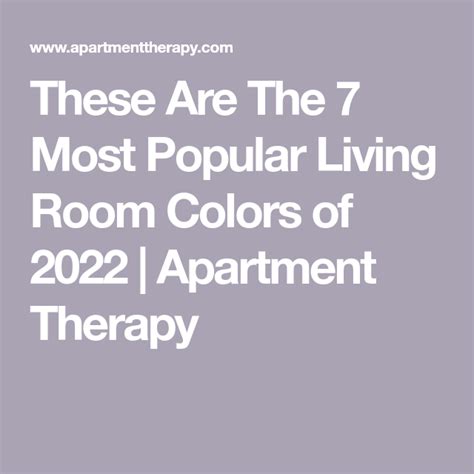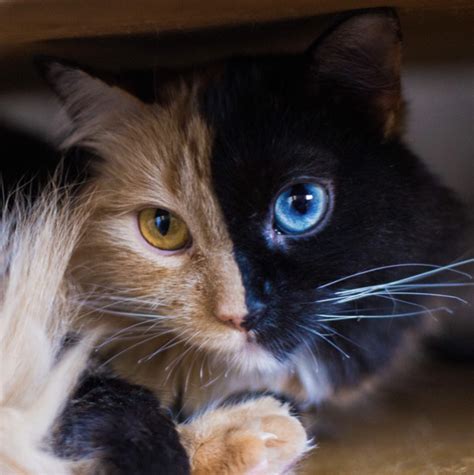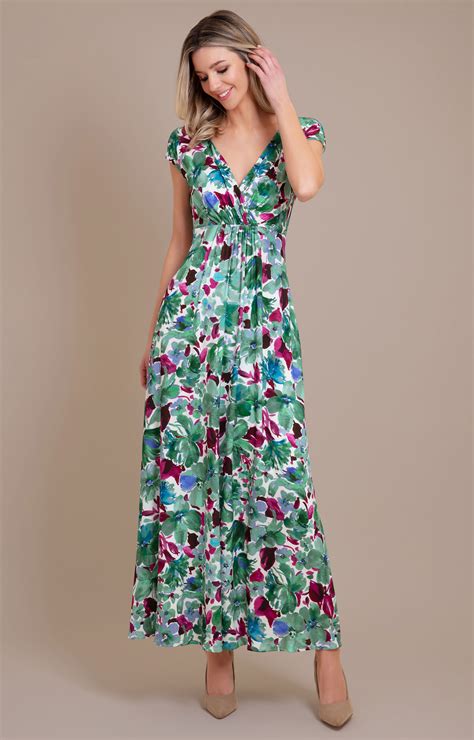
Interior design experts are warning homeowners to steer clear of gray paint in their living rooms, citing its potential to create a drab and depressing atmosphere. Designers say opting for warmer, more vibrant colors can significantly enhance the mood and energy of a living space.
Gray, once a ubiquitous choice for its perceived neutrality and sophistication, is now being reconsidered by design professionals. Two designers recently highlighted the color’s drawbacks, noting its tendency to flatten a room and suck the life out of it. “Gray became popular because people thought it was a neutral, but what we’re realizing is that gray doesn’t create a very welcoming environment,” explained designer Natalia Miyar in an interview. “It can be quite cold and make a room feel lifeless.”
Another designer, Tash Bradley, a color psychologist and director of interior design at Lick, echoed Miyar’s sentiment. Bradley stated, “Gray is a big no-no. It’s the worst color you can use because it doesn’t excite, inspire, or ignite. It doesn’t do anything for us, which is why we’re bored of it.”
The issue, designers say, is that gray often lacks the warmth and depth needed to create a truly inviting space. While it can work in certain contexts, such as bathrooms or bedrooms where a calming effect is desired, it can be particularly detrimental in living rooms, which are typically meant to be areas of activity and social interaction.
Instead of gray, designers are recommending a range of alternative colors that can infuse living rooms with personality and energy. These include warmer neutrals like beige, cream, and greige (a blend of gray and beige), as well as bolder hues such as blues, greens, yellows, and even soft pinks. The key, they say, is to choose colors that reflect personal style and create a sense of comfort and joy.
The shift away from gray reflects a broader trend in interior design towards more expressive and personalized spaces. Homeowners are increasingly seeking to create environments that reflect their individual tastes and promote well-being, rather than simply following the latest trends. This has led to a resurgence of interest in color and texture, as well as a greater emphasis on creating spaces that feel warm, inviting, and full of life.
“People are craving warmth and personality in their homes,” Miyar noted. “They want spaces that feel authentic and reflect their individuality.” This desire for authenticity has led to a greater appreciation for colors that tell a story and evoke emotions.
The overuse of gray in recent years has also contributed to its decline in popularity. As gray became increasingly ubiquitous, it began to feel monotonous and predictable. Homeowners grew tired of seeing the same shades of gray in every room and started to crave something different. This saturation effect has further fueled the trend away from gray and towards more vibrant and expressive colors.
Moreover, the increasing awareness of the psychological effects of color has played a role in the shift away from gray. Studies have shown that color can have a profound impact on mood, energy levels, and even behavior. Gray, with its lack of warmth and vibrancy, has been linked to feelings of sadness, apathy, and boredom. As people become more aware of these effects, they are increasingly seeking out colors that promote positive emotions and create a sense of well-being.
The move away from gray does not necessarily mean that it should be completely avoided. Gray can still be used effectively in certain contexts, such as in accent pieces or as a backdrop for bolder colors. However, designers caution against using gray as the dominant color in a living room, as this can create a space that feels cold, sterile, and uninviting.
Ultimately, the best colors for a living room are those that reflect personal style and create a sense of comfort and joy. Whether it’s a warm neutral, a vibrant hue, or a combination of both, the key is to choose colors that make you feel good and create a space that you love to spend time in.
In-Depth Analysis of the Gray Dilemma
The downfall of gray in interior design is not merely a matter of aesthetic preference. It stems from a deeper understanding of how colors interact with human psychology and the evolving needs of modern living spaces. The initial appeal of gray lay in its versatility and perceived sophistication. It was seen as a blank canvas that could be easily paired with other colors and textures, creating a minimalist and modern look. However, this neutrality eventually became its weakness.
Gray, in its purest form, lacks the inherent warmth and vibrancy that many find essential for a comfortable and inviting living space. It absorbs light rather than reflecting it, which can make a room feel darker and smaller. This is particularly problematic in rooms with limited natural light. Furthermore, gray can be perceived as unemotional and detached, which can create a sense of distance rather than connection.
The psychological impact of gray is significant. Studies have shown that exposure to gray can lead to feelings of sadness, boredom, and apathy. This is because gray is associated with a lack of stimulation and energy. In a living room, which is typically intended to be a space for relaxation, socializing, and entertainment, these negative emotions can be particularly detrimental.
The rise of remote work and the increased time spent at home have further exacerbated the problems associated with gray. As people spend more time in their living rooms, they are becoming more aware of the impact that their surroundings have on their mood and well-being. A gray living room, which may have seemed acceptable in the past, can now feel oppressive and draining.
The shift away from gray is also driven by a desire for greater personalization and self-expression in interior design. Homeowners are no longer content to simply follow trends. They want to create spaces that reflect their unique personalities and interests. This has led to a resurgence of interest in color, texture, and pattern, as well as a greater emphasis on creating spaces that feel authentic and meaningful.
Alternatives to Gray: Embracing Warmth and Personality
Designers are recommending a variety of alternatives to gray that can infuse living rooms with warmth, personality, and energy. These include:
- Warm Neutrals: Colors like beige, cream, and greige offer the versatility of gray without the coldness. They provide a neutral backdrop that can be easily paired with other colors and textures, while also adding a sense of warmth and comfort.
- Earthy Tones: Colors inspired by nature, such as browns, greens, and rusts, can create a sense of grounding and connection. They evoke feelings of tranquility and peace, making them ideal for creating a relaxing living room environment.
- Soft Pinks: Pink has made a comeback in recent years, with softer shades like blush and rose becoming increasingly popular. Pink adds a touch of femininity and playfulness to a room, while also creating a sense of warmth and intimacy.
- Blues and Greens: These colors are associated with calmness and serenity. Lighter shades of blue and green can create a fresh and airy feel, while deeper shades can add a sense of drama and sophistication.
- Yellows: Sunny yellows can instantly brighten up a room and create a cheerful atmosphere. However, it’s important to use yellow sparingly, as too much can be overwhelming.
The Role of Lighting
The effectiveness of any color in a living room is heavily influenced by lighting. Natural light is always preferable, as it brings out the true colors and creates a sense of openness and airiness. However, in rooms with limited natural light, artificial lighting becomes even more important.
Warm-toned light bulbs can help to counteract the coldness of gray and create a more inviting atmosphere. Layering different types of lighting, such as ambient, task, and accent lighting, can also add depth and dimension to a room.
Texture and Materiality
The choice of materials and textures can also play a significant role in creating a warm and inviting living room. Soft fabrics like velvet, wool, and linen can add a sense of luxury and comfort. Natural materials like wood, stone, and leather can add a touch of warmth and authenticity.
Combining different textures can also create visual interest and depth. For example, pairing a smooth velvet sofa with a chunky knit throw and a woven rug can create a cozy and inviting atmosphere.
The Importance of Personal Style
Ultimately, the best colors and materials for a living room are those that reflect personal style and create a sense of comfort and joy. It’s important to experiment with different colors and textures to find what works best for you. Don’t be afraid to break the rules and create a space that is truly unique and personal.
As Tash Bradley emphasized, “Color is personal, so find something that excites you. Something that ignites you.” Choosing colors that resonate with you and reflect your personality is key to creating a living room that you will love spending time in.
Beyond Paint: Incorporating Color Through Accessories
If you’re hesitant to commit to a bold wall color, there are many other ways to incorporate color into your living room. Accessories such as throw pillows, blankets, rugs, artwork, and decorative objects can add pops of color and personality without overwhelming the space.
These accessories can be easily swapped out to change the look and feel of the room as your tastes evolve. This makes them a great option for those who are not ready to commit to a major color change.
The Future of Interior Design
The shift away from gray is part of a larger trend towards more personalized, sustainable, and health-conscious interior design. Homeowners are increasingly seeking to create spaces that not only look good but also promote well-being and reflect their values.
This trend is likely to continue in the coming years, as people become more aware of the impact that their surroundings have on their lives. Interior design will become less about following trends and more about creating spaces that are truly authentic and meaningful.
Frequently Asked Questions (FAQs)
-
Why is gray considered a bad color for living rooms by some designers?
Gray, while initially popular for its neutrality, can often create a cold, lifeless, and uninviting atmosphere in living rooms. According to designer Natalia Miyar, “Gray became popular because people thought it was a neutral, but what we’re realizing is that gray doesn’t create a very welcoming environment.” It lacks warmth and can absorb light, making the room feel smaller and darker. Tash Bradley, a color psychologist, adds that “Gray is a big no-no. It’s the worst color you can use because it doesn’t excite, inspire, or ignite.”
-
What are some recommended alternatives to gray for living room colors?
Designers suggest opting for warmer neutrals like beige, cream, and greige (a mix of gray and beige). Bolder options include blues, greens, yellows, and soft pinks. The key is to choose colors that reflect personal style and create a sense of comfort and joy. Earthy tones inspired by nature, such as browns and rusts, are also recommended for creating a tranquil environment.
-
Can gray ever be used effectively in a living room?
While designers caution against using gray as the dominant color, it can still be used effectively in certain contexts. Gray can work well as an accent color or as a backdrop for bolder colors. It can also be suitable for smaller elements like furniture or decorative items. The important thing is to avoid creating an overall gray and monotonous environment.
-
How does lighting affect the choice of colors in a living room?
Lighting plays a crucial role in how colors appear in a living room. Natural light is always preferable, as it brings out the true colors. However, in rooms with limited natural light, artificial lighting becomes essential. Warm-toned light bulbs can help to counteract the coldness of colors like gray and create a more inviting atmosphere. Layering different types of lighting, such as ambient, task, and accent lighting, can also add depth and dimension to the room.
-
What is the broader trend in interior design that is influencing the move away from gray?
The move away from gray reflects a broader trend in interior design towards more expressive and personalized spaces. Homeowners are increasingly seeking to create environments that reflect their individual tastes and promote well-being, rather than simply following the latest trends. This has led to a resurgence of interest in color and texture, as well as a greater emphasis on creating spaces that feel warm, inviting, and full of life. People are “craving warmth and personality in their homes,” according to Miyar, seeking “spaces that feel authentic and reflect their individuality.”
Further Considerations for Homeowners
Beyond the specific color choices, there are several other factors that homeowners should consider when designing their living rooms.
- The Size of the Room: Smaller rooms may benefit from lighter colors, which can help to create a sense of spaciousness. Larger rooms can handle bolder colors, but it’s important to avoid overwhelming the space.
- The Amount of Natural Light: Rooms with limited natural light may require lighter and warmer colors to brighten them up. Rooms with plenty of natural light can handle darker colors, but it’s important to ensure that the colors don’t fade or look washed out in the sunlight.
- The Style of the Home: The color palette should complement the architectural style of the home. A modern home may benefit from a more minimalist color scheme, while a traditional home may be able to handle more ornate and colorful patterns.
- The Function of the Room: The color palette should also reflect the intended function of the room. A living room that is primarily used for relaxation may benefit from calming colors, while a living room that is used for entertaining may be able to handle more vibrant and energetic colors.
Conclusion
The days of gray as the go-to color for living rooms may be numbered. Designers are increasingly warning against its use, citing its potential to create a cold, lifeless, and uninviting atmosphere. Instead, they are recommending a range of alternative colors that can infuse living rooms with warmth, personality, and energy.
By embracing these alternatives and paying attention to the factors outlined above, homeowners can create living rooms that are not only stylish but also comfortable, inviting, and reflective of their personal style. The key is to experiment, have fun, and create a space that you love to spend time in. As interior design evolves, the emphasis on personal expression and well-being will only continue to grow, shaping the way we design and experience our homes. The rejection of ubiquitous gray is a clear indicator of this shift towards more meaningful and personalized living spaces.









